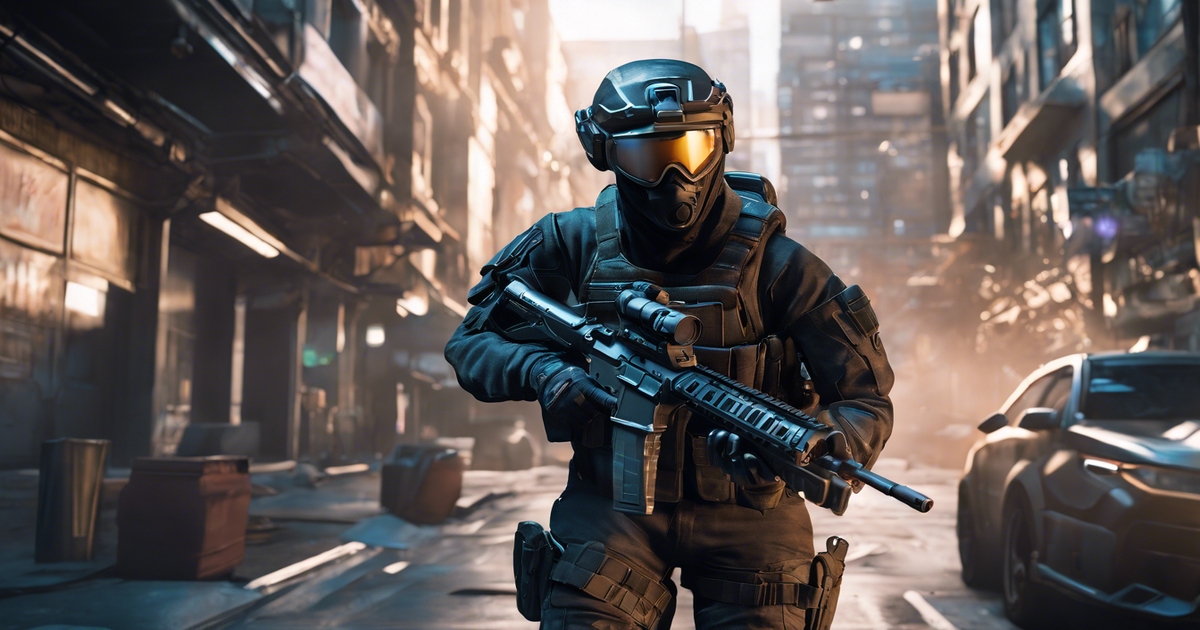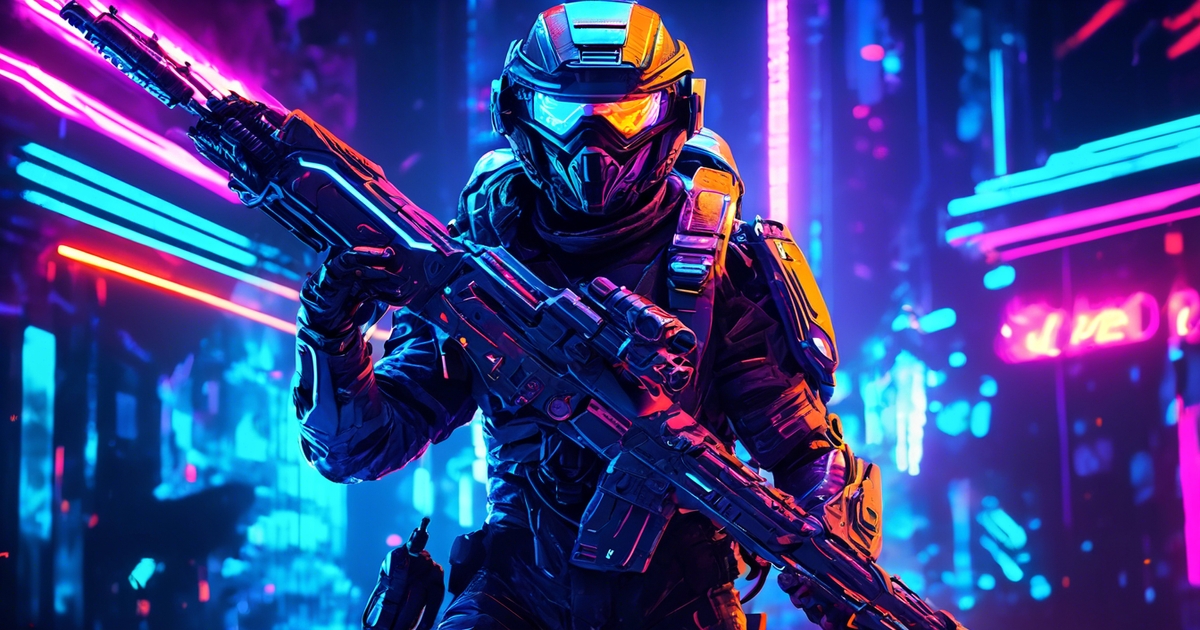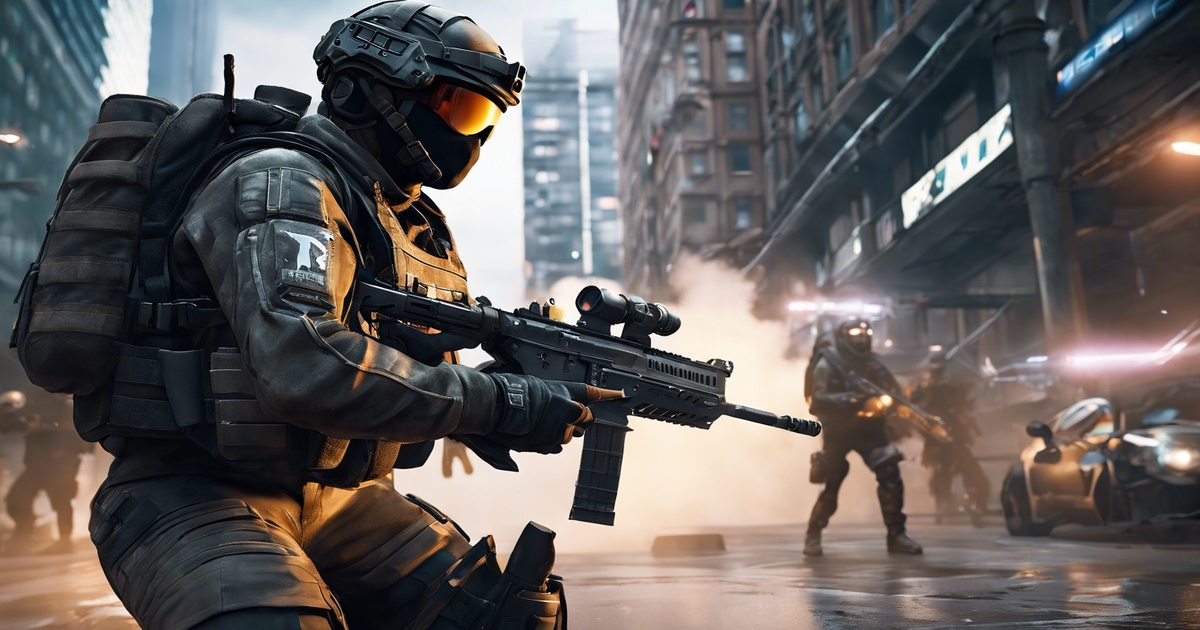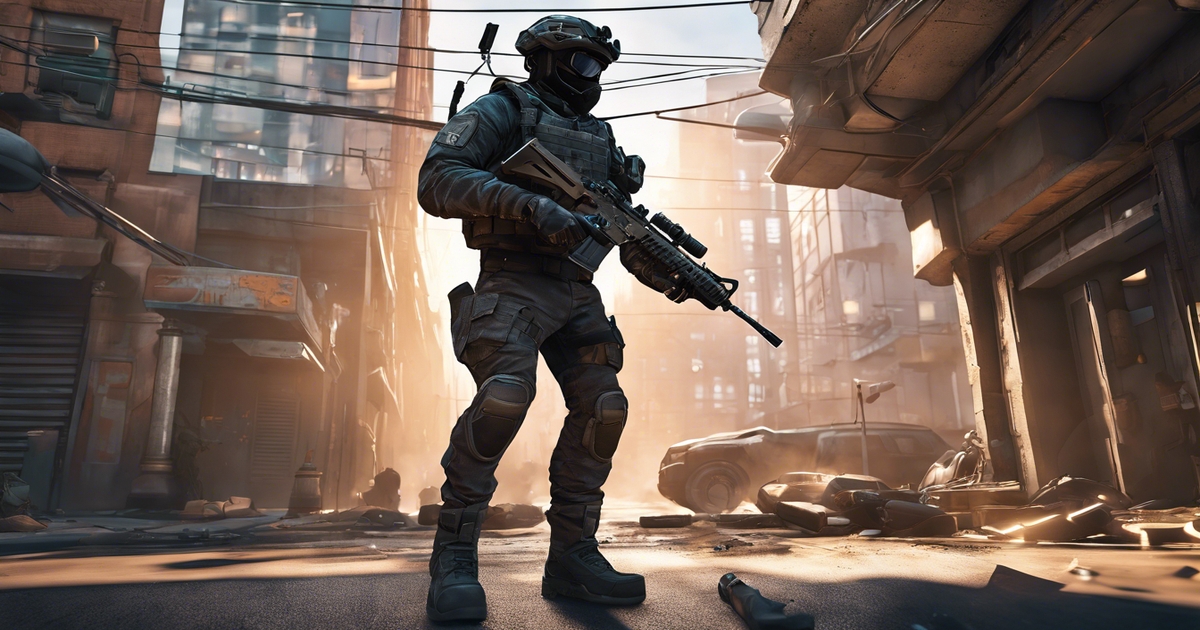FPS vs TPS: Understanding Differences, Similarities, and More

- Key Takeaways
- Defining First-Person Shooters and Third-Person Shooters
- Analyzing Control Schemes in FPS versus TPS
- Camera Perspectives: First-Person vs Third-Person View
- Narrative and Environmental Storytelling in FPS and TPS
- Combat Dynamics Unique to FPS and TPS Titles
- Popular FPS and TPS Games Examples
- Summary
- Frequently Asked Questions
FPS vs. TPS: two gaming genres that bring a whole different vibe to the table. It’s all about the contrast – first-person shooter games immerse you in the action, putting you right in the middle of intense battles, while third-person shooters give you a broader view of your character and their surroundings, adding strategic depth to the gameplay. Both have their own unique appeal and loyal fan bases, but which one truly reigns supreme?
Let’s dive into this epic showdown and uncover what sets these two genres apart.
Key Takeaways
- Understanding the differences between FPS and TPS can help you make informed decisions when choosing games to play.
- Consider the control schemes and camera perspectives of FPS and TPS games to find the style that best suits your preferences.
- Recognize how narrative and environmental storytelling differ in FPS and TPS titles to enhance your gaming experience.
- Explore the unique combat dynamics in FPS and TPS games to appreciate the distinct gameplay elements each genre offers.
- Drawing from popular FPS and TPS game examples can provide insights into the diverse experiences available within each category.
- By understanding these distinctions, you can better appreciate and enjoy the nuances of both FPS and TPS games.
Defining First-Person Shooters and Third-Person Shooters

First-Person Perspective
First-person shooters (FPS) provide a viewpoint from the eyes of the character. This means that when you play an FPS game, you see everything from the perspective of the in-game character. Imagine looking through their eyes as you navigate through a virtual world, aiming and shooting at enemies.
When playing an FPS, your screen becomes your character’s eyes, allowing for an immersive gaming experience. You can only see what your character would realistically be able to see, making it feel like you’re right in the middle of all the action.
Third-Person View
On the other hand, third-person shooters (TPS) offer a different gaming experience by providing a view of the entire character on-screen. In these games, players have a wider field of vision as they control their characters from behind or slightly above and behind them.
In TPS games, players can see more of their surroundings compared to FPS games because they have a broader view that includes not just what’s directly in front but also what’s happening around their characters.
Analyzing Control Schemes in FPS versus TPS

Different Gameplay Styles
First-person shooters (FPS) demand precise aiming and quick reflexes from players. This perspective immerses the player directly into the action, intensifying the gaming experience. In contrast, third-person shooters (TPS) often incorporate cover-based mechanics and strategic positioning. Players have a wider view of their character’s surroundings, allowing for more tactical gameplay.
The control schemes in both FPS and TPS have evolved to accommodate complex movement and combat actions. For example, in FPS games like “Call of Duty,” control schemes prioritize aiming accuracy with features like aim-down sights (ADS) and responsive camera movements to simulate realistic gun handling. On the other hand, TPS titles such as “Gears of War” emphasize cover-based mechanics, where controls allow seamless transitions between taking cover, blind-firing, and maneuvering around obstacles during intense firefights.
Evolution of Control Schemes
Over time, advancements in technology have enabled developers to refine control schemes further. Both genres now offer customizable controls that cater to individual preferences. Players can adjust sensitivity settings for aiming or customize button layouts to suit their playstyle.
Moreover, modern FPS and TPS games often integrate additional movement mechanics such as sprinting, sliding, or parkour elements into their control schemes to enhance mobility during gameplay. These improvements contribute to a more immersive gaming experience by providing players with greater freedom of movement while maintaining precision in combat engagements.
Camera Perspectives: First-Person vs Third-Person View

Immersive Experience
The first-person view in games allows players to see the game world through the eyes of their character. This creates a highly immersive experience, as players feel like they are directly interacting with the environment. For example, in first-person shooter (FPS) games, players can truly feel the adrenaline rush as they navigate through intense combat scenarios from their character’s perspective. The sense of being “in the shoes” of the protagonist adds a layer of intensity to the gaming experience.
On top of that, players get an up-close look at all the action unfolding around them without any distractions from their avatar or surroundings. This heightened level of immersion can make every encounter feel more personal and engaging for gamers.
Situational Awareness
Conversely, third-person view offers a wider field of vision that provides better situational awareness and enhances overall gameplay strategy. By seeing their character on-screen, players have improved visibility over obstacles and cover while maintaining focus on enemy movements. In third-person shooter (TPS) games such as “Gears of War,” this perspective enables effective use of cover mechanics by allowing players to peek around corners or over barriers without exposing themselves to danger.
Moreover, having a clear line-of-sight on one’s own character also aids in understanding how others perceive them within the game world. It helps maintain spatial awareness during fast-paced combat scenarios where keeping track of multiple enemies is crucial for survival.
Narrative and Environmental Storytelling in FPS and TPS
Emphasizing Immersive, Linear Narratives
First-person shooter (FPS) games are known for their immersive, linear narratives. In these games, the player experiences the story through the eyes of the protagonist. The focus is on drawing players into a carefully crafted narrative world where they become an active participant. For example, in “Half-Life 2,” players step into the shoes of Gordon Freeman and navigate through a richly detailed environment while uncovering a compelling storyline.
Players often feel more connected to the game’s plot due to this intimate perspective. The linear storytelling approach guides them through a predetermined sequence of events that unfold seamlessly as they progress. This creates a sense of urgency and tension, immersing players in an unfolding drama.
Highlighting Environmental Storytelling and Exploration
On the other hand, third-person shooter (TPS) titles frequently emphasize environmental storytelling and exploration rather than relying solely on direct narrative delivery. Games like “The Last of Us” incorporate meticulously designed environments that convey subtle details about characters’ lives or past events without explicitly narrating them.
Combat Dynamics Unique to FPS and TPS Titles
Fast-Paced Gunplay
In FPS games, players experience fast-paced, intense gunplay as they navigate through various environments. The focus is primarily on shooting mechanics and precision aiming to eliminate enemies. For instance, in games like “Call of Duty” or “Counter-Strike,” players engage in rapid, adrenaline-pumping firefights where quick reflexes and accurate shooting skills are essential.
The combat dynamics in FPS titles often revolve around the use of a wide array of firearms, explosives, and tactical maneuvers to outmaneuver opponents. Players must swiftly react to changing scenarios and make split-second decisions during intense battles.
Varied Combat Mechanics
On the other hand, TPS games may offer more diverse combat mechanics by incorporating elements such as melee attacks and stealth tactics alongside traditional gunplay. Games like “Metal Gear Solid” or “Uncharted” provide opportunities for players to engage in close-quarters combat using hand-to-hand techniques or sneak past adversaries undetected.
The inclusion of these additional combat elements allows for a more versatile gameplay experience where players can adapt their strategies based on the specific challenges presented within the game’s narrative context.
Popular FPS and TPS Games Examples
Iconic Titles
First-person shooter (FPS) games such as “Call of Duty,” “Halo,” and “Half-Life” have left an indelible mark on the gaming industry. These titles are known for their intense, immersive gameplay that puts players directly in the action. With a focus on weapon-based combat and strategic maneuvering, FPS games offer a thrilling experience for those who enjoy fast-paced, adrenaline-pumping gameplay.
On the other hand, third-person shooter (TPS) games like “Gears of War,” “Uncharted,” and “Tomb Raider” provide a different perspective to players. In these games, players control characters from a viewpoint outside of themselves, allowing for more comprehensive situational awareness and tactical planning. The diverse settings and engaging storylines make these TPS titles appealing to gamers looking for immersive narratives coupled with exhilarating combat sequences.
Both genres exemplify unique characteristics that cater to distinct preferences among gamers. For instance, fans of FPS games often relish the feeling of being right in the middle of intense firefights while utilizing an array of futuristic or realistic weaponry. Conversely, TPS enthusiasts appreciate the ability to see their character’s movements and actions from a broader viewpoint while navigating challenging environments or solving intricate puzzles.
Summary
So, there you have it – the ins and outs of FPS and TPS games. From control schemes to narrative storytelling and combat dynamics, we’ve covered it all. Whether you’re a die-hard FPS fan or a TPS enthusiast, each genre offers a unique gaming experience that caters to different preferences. So, next time you pick up a controller, think about the perspective you want to immerse yourself in and the type of gameplay that gets your adrenaline pumping.
Now, armed with this knowledge, go ahead and dive into your favorite FPS or TPS title. Better yet, try out something new to broaden your gaming horizons. The gaming world is vast and ever-evolving, so don’t limit yourself to just one genre. Embrace the diversity and enjoy the thrill of every headshot or tactical maneuver. Happy gaming!
Frequently Asked Questions
What are the main differences between First-Person Shooters (FPS) and Third-Person Shooters (TPS)?
In FPS games, you experience the action through the eyes of the character, while in TPS games, you view your character from behind. This difference affects gameplay mechanics and tactics.
How do control schemes differ in FPS compared to TPS?
In FPS, control focuses on precise aiming and movement, often using a mouse or controller joysticks. TPS typically involves more strategic positioning due to the over-the-shoulder camera angle affecting visibility.
What distinguishes first-person view from third-person view in FPS and TPS games?
First-person view immerses players directly into the action as if they were seeing through their character’s eyes. Third-person view offers a wider perspective by showing the character alongside surroundings, influencing situational awareness and cover usage.
How does narrative storytelling vary between FPS and TPS games?
FPS games tend to emphasize personal immersion with linear narratives driven by player actions. TPS titles often incorporate environmental storytelling where players uncover details about characters and settings within the game world.
Are there unique combat dynamics specific to either FPS or TPS titles?
Yes, each genre has distinct combat dynamics. In FPS games, precision aiming is crucial for success while TPS titles may place more emphasis on tactical maneuvering due to increased visibility of both enemies and surroundings.
